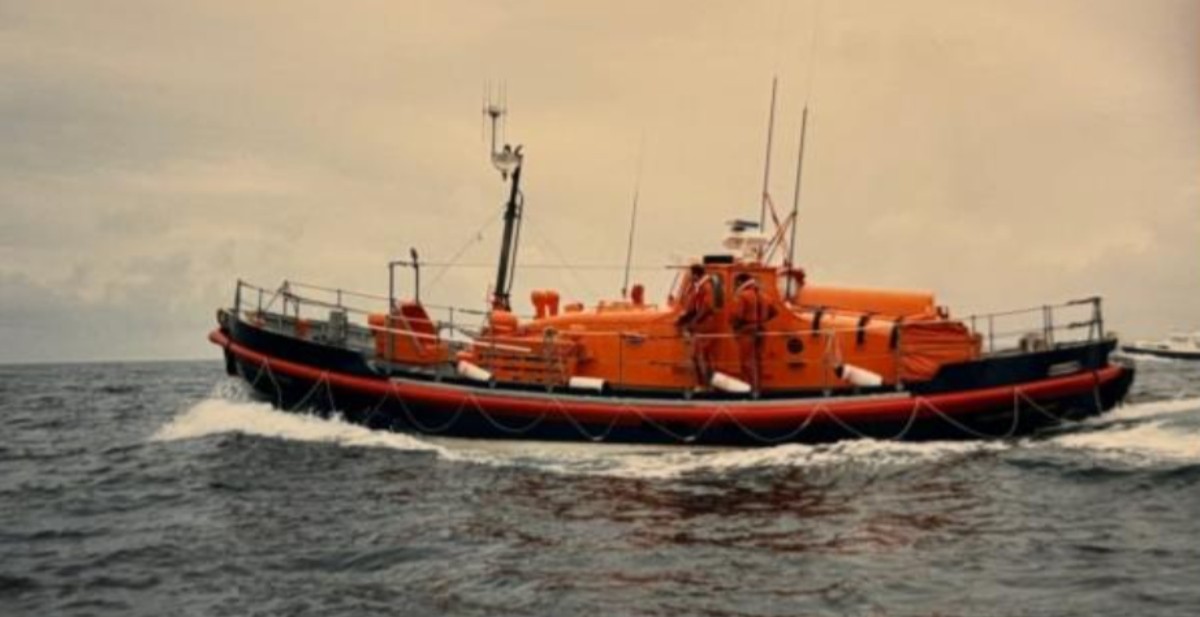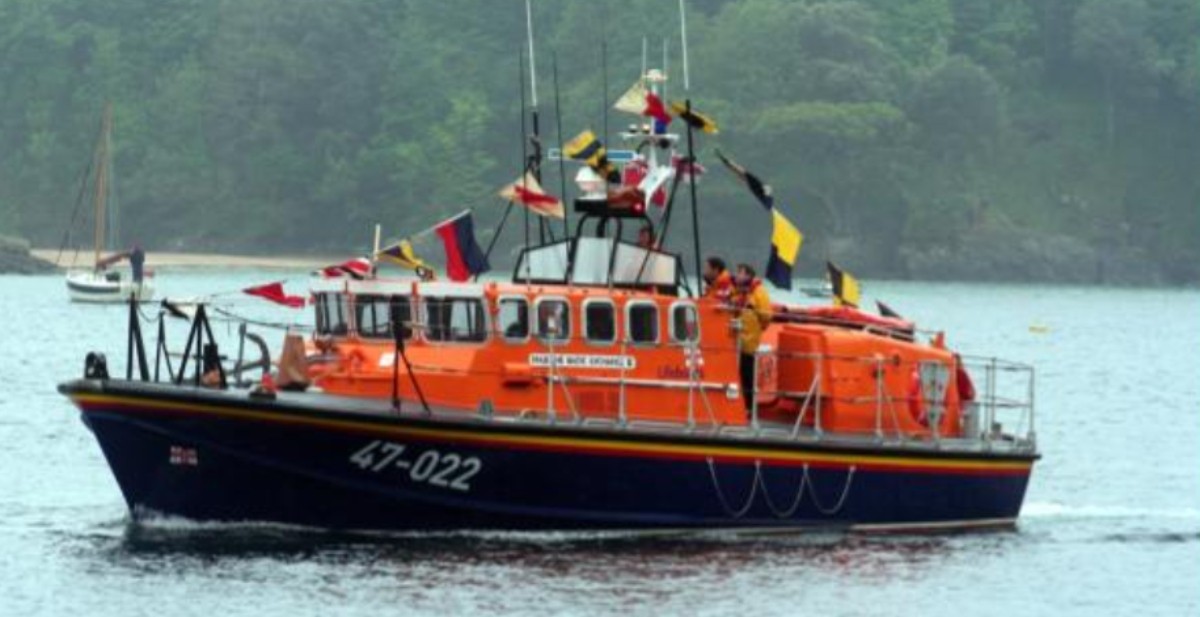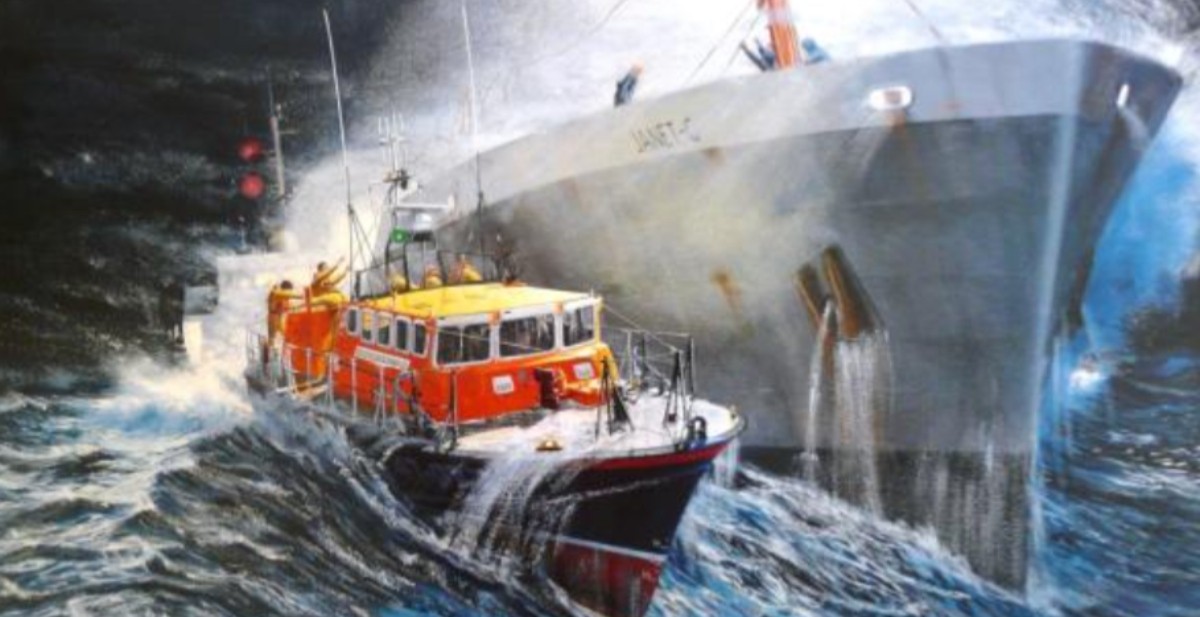Baltic Exchange and The RNLI Salcombe Lifeboat
In a new regular feature for the Baltic Briefing, we will be receiving bi-monthly updates from the RNLI’s Salcombe lifeboat station. Salcombe’s All Weather Tamar class lifeboat is named the Baltic Exchange III, and forges a partnership between the two institutions that goes back generations. In the first instalment, we learn something about the history of previous Baltic Exchange Lifeboats and the important role they play in saving lives at sea.
By Steve Walter, Salcombe ALB Crew
The Baltic Exchange has had a long relationship with the RNLI. The first lifeboat to be funded by the Baltic Exchange was the Mark Lane, based in Yarmouth between 1868 and 1889. The close relationship between the Exchange and the Salcombe Lifeboat Station, which began in 1962, continues to this day.
The first lifeboat to carry the name of the Exchange was a 14 – metre, 23 – ton Watson class lifeboat. She had a covered wheelhouse and was powered by two 60hp Gardner diesel engines, which gave her a top speed of just under 9 knots and a range of 275 miles. She carried a crew of 8 and in rough weather could carry up to 95 people on board. The cost of the new lifeboat was £42,000 and this was met by the members of the Baltic Exchange.

The Baltic Exchange served for 26 years. In that time, she was launched 258 times and saved 76 lives. One notable event happened in April 1983, just a few weeks after the enquiry into the loss of the Penlee lifeboat and eight members of her crew. The Salcombe lifeboat came close to suffering a similar fate when she capsized in mountainous seas in Start Bay whilst searching for some missing divers. Although she wasn’t watertight, she did have self - righting capability in the form of an emergency airbag. When the boat rolled beyond the point of no return, a sausage shaped bag stowed on the roof of the wheelhouse was inflated by a compressed air cannister. Within 10 to 15 seconds, she was upright again, having rolled through 360 degrees. The crew, although shaken up, were all accounted for having recovered a member of the crew who had been swept overboard during the capsize and miraculously the lifeboat came through the incident relatively unscathed.
In 1988 The Baltic Exchange was retired and replaced by The Baltic Exchange II, a 14m steel Tyne class lifeboat weighing 25 tonnes. With twin 425hp Detroit diesel engines and a top speed of 18 knots she was more than twice as fast as her wooden hulled predecessor. The Baltic Exchange contributed £150,000 towards her £584,000 build cost. No doubt comforting to the crew, this new class of lifeboat had a watertight wheelhouse and would self - right in seven seconds if she capsized.

In 1992, a TV crew arrived in Salcombe to film a six - part documentary series called Lifeboat. Not long after their arrival, The Baltic Exchange II was tasked to rescue a 1200 – ton coaster, the Janet C, who had lost all power and was drifting towards rocks at Start Point in a force 9 severe gale. When The Baltic Exchange II arrived on scene, it was clear what a challenge it would be to secure a tow line onto the casualty vessel. Rough seas, gale force winds, darkness and the sheer size difference between the two boats made throwing a heaving line successfully almost impossible. After several attempts, the line was made fast and the tow rope secured. The lifeboat didn’t have enough power in her engines to tow her away from the rocks but managed to hold the Janet C off the rocks for two hours. With the wind slowly changing direction, The Baltic Exchange II could start making more headway to safety and was eventually relieved by a tug in the early hours of the morning to take over the tow. Two of the camera crew went out with the lifeboat and filmed the entire rescue (still available to watch on YouTube). The Coxswain of the lifeboat, Frank Smith, was awarded a RNLI Bronze Medal for courage, seamanship and determination, with the remainder of the crew being recognised by the institution for their part in the rescue.

In March 2008, after 478 launches, rescuing 530 people and saving 135 lives, The Baltic Exchange II was replaced by the current Tamar class The Baltic Exchange III. Powered by twin 1000hp Caterpillar diesel engines, the Tamar has a top speed of 25 knots and a range of 250 miles. The Baltic Exchange III has many safety features including an advanced seat design to reduce stress on the backs of the volunteer crew members when they are at sea. An impressive array of on-board computers enables the crew to manage the lifeboats functions and share tasks from the safety of their own seats. Fundraising for the new lifeboat had started 10 years previously. By 2008, Salcombe RNLI had raised more than half of its £2.5m price tag with the Baltic Exchange donating £547,000 to the cause.

The Baltic Exchange III carries a maximum operational crew of 7 and can carry up to 108 survivors. The lifeboat carries a comprehensive range of first aid equipment, stretchers, oxygen and Entonox gas for pain relief. Hidden under the aft deck is a small, inflatable daughter boat. Powered by a 15hp outboard engine, it can be deployed by lowering the transom and sent out in moderate conditions to access places the lifeboat cannot reach such as casualties on rocks or in shallow waters.
All RNLI lifeboats have a unique identification number. The Baltic Exchange III’s number is 16-09. All Tamar lifeboats bear the prefix 16, because they are 16 metres in length and the 09 indicates that she is the ninth of the class to be built.
Modern day lifeboating may look different to what it was in years gone by, but the intention remains the same – to save lives at sea. With Salcombe’s location on the southern tip of Devon, and with sandy beaches and clear waters, it attracts many holiday makers and people wishing to get onto the water. Generally speaking, if it floats, you will find it in Salcombe! The rich waters also offer world class fishing and we have thriving fleets of potting boats and trawlers all operating locally. This means that we have a busy station that responds to around 50 shouts a year. Recent call outs have ranged from assisting kayakers in difficulty, to the twelve our rescue of a crabbing boat that had lost power in the middle of the shipping lanes and required a tow home.
We keep relationships with our main benefactor, Baltic Exchange strong with regular trips up to London by the crew, and hosting members and staff of the Exchange here in Salcombe. Our next update will be in August when the summer season will no doubt be in full swing.